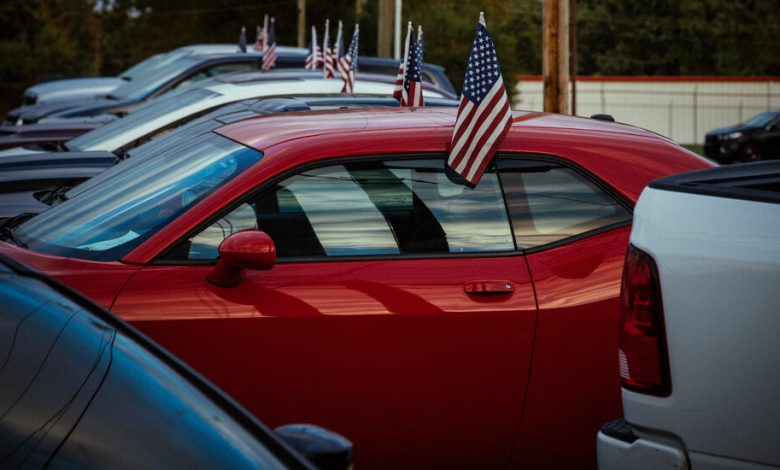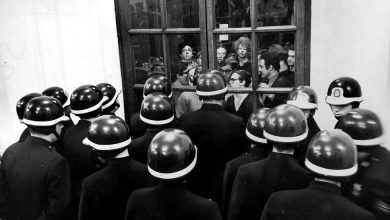What’s Next for Profits? Cars Shed Light on a Key Inflation Question.

In a recent speech pointedly titled “Bringing Inflation Down,” Lael Brainard, the Federal Reserve’s vice chair, zoomed in on the automobile market as a real-world example of a major uncertainty looming over the outlook for price increases: What will happen next with corporate profits.
Many companies have been able to raise prices beyond their own increasing costs over the past two years, swelling their profitability but also exacerbating inflation. That is especially true in the car market. While dealerships are paying manufacturers more for inventory, they have been charging customers even higher prices, sending their profits toward record highs.
Dealers could pull that off because demand has been strong and, amid disruptions in the supply of parts, there are too few trucks and sedans to go around. But — in line with its desire for the economy as a whole — the Fed is hoping both sides of that equation could be on the cusp of changing.
“With production now increasing, and interest-sensitive demand cooling, there may soon be pressures to reduce vehicle margins and prices in order to move the higher volume of cars being produced off dealer lots,” Ms. Brainard explained during her remarks.
The Fed has been raising interest rates to make borrowing for big purchases — cars, houses, business expansions — more expensive. The goal is to cool demand and slow the fastest inflation in four decades. Whether it can pull that off without inflicting serious pain on the economy will hinge partly on how easily companies surrender their hefty profits.
If companies begin to lower prices to compete for customers as demand abates, price increases might slow without costing a lot of jobs. But if they try to hold on to big profits, the transition could be bumpier as the Fed is forced to squeeze the economy more drastically and quash demand more severely.
“There has been a giant shift in bargaining power between consumers and corporations,” said Gennadiy Goldberg, senior U.S. rates strategist at TD Securities. “That’s where the next adjustment has to come — corporations have to see some pain.”
The example of the auto industry offers reasons for hope but also caution. While there are signs that price increases for used cars are beginning to moderate as supply recovers, that process has been halting, and the new-car market illustrates why the path toward lower profits that help slow inflation could be a long one.
That’s because three big forces that are playing out across the broader economy are on particularly clear display in the car market. Supply chains have not completely healed. Demand may be slowing down, but it still has momentum. And companies that have grown used to charging high prices and raking in big profits are proving hesitant to give up.
The auto market split into two segments that are now diverging — new cars and used cars.
New-car production was upended as the pandemic shut down factories making semiconductors and other parts, and it is only limping back. Freshly minted vehicles remain extraordinarily scarce, according to dealers and data, and several industry experts said they didn’t see a return to normal levels of output for years as supply problems continue. Prices are still increasing swiftly, and dealer profits remain sharply elevated with little sign of cracking.
Inflation F.A.Q.
What is inflation? Inflation is a loss of purchasing power over time, meaning your dollar will not go as far tomorrow as it did today. It is typically expressed as the annual change in prices for everyday goods and services such as food, furniture, apparel, transportation and toys.
What causes inflation? It can be the result of rising consumer demand. But inflation can also rise and fall based on developments that have little to do with economic conditions, such as limited oil production and supply chain problems.
Is inflation bad? It depends on the circumstances. Fast price increases spell trouble, but moderate price gains can lead to higher wages and job growth.
How does inflation affect the poor? Inflation can be especially hard to shoulder for poor households because they spend a bigger chunk of their budgets on necessities like food, housing and gas.
Can inflation affect the stock market? Rapid inflation typically spells trouble for stocks. Financial assets in general have historically fared badly during inflation booms, while tangible assets like houses have held their value better.
By contrast, the supply of used cars has rebounded after plunging in the pandemic, and prices have begun to depreciate at a wholesale level, where dealers buy their stock. But, so far, those dealers aren’t really passing those savings along to consumers. The price of a typical used car has stabilized around $28,000, up 9 percent from a year ago, based on Cox Automotive data. Official used-car inflation data is easing, but only slightly.
Why consumer used-car prices — and dealer profits — are taking time to moderate is something of a mystery. Jonathan Smoke, chief economist at Cox Automotive, said dealers might be basing their prices on what they paid earlier in the year, when costs were higher, for the cars sitting on their lots.
“Dealers are feeling it,” Mr. Smoke said of the price moderation. “But because they price their vehicles based on what they pay for them, the consumer isn’t seeing the price discounts yet.”
Some early instances of discounting are showing up. At the Buick and GMC dealership that Beth Weaver runs in Erie, Pa., demand for used cars has begun to slow down, and the business has sold a few vehicles at a loss.
“There are still models that we’ve been able to be profitable on — nothing like last year,” Ms. Weaver said.
Behavior like Ms. Weaver’s may broaden out. Still, the road to declining used-car prices could be bumpy. Ms. Weaver said she would not have to lower prices so much if she cast a wider net — she sells only locally and does not ship cars as a business model — but urban areas and parts of the South are seeing demand hold up better.
Some dealers believe that there is still unmet demand for used vehicles after several years in which families have struggled to find cars. They also doubt supply will come roaring back, because so few cars were produced in 2020 and 2021. That is giving them the confidence and ability to avoid discounting too much.
“We’re pricing our vehicles just about every day based on market dynamics,” said Bill Feinstein, who helps run Honda dealerships selling new and used cars in New Jersey and New Hampshire. “Demand continues to be strong, and the consumer appears to be still relatively intact.”
But dealers and industry analysts agreed that higher Fed interest rates could help change that.
The central bank has been lifting borrowing costs at the fastest clip since the 1980s, and a third straight move of three-quarters of a percentage point is expected on Wednesday. As financing a car purchase becomes more expensive, price-sensitive auto shoppers in the used market may begin to pull back more notably, forcing used-car dealers to charge less.
New cars may be a different story, however, because supply and demand remain so out of whack.
At Mr. Feinstein’s Honda dealership in New Jersey, 50 to 100 new cars are typically for sale on the lot. That’s an improvement from the worst pandemic shortages, when sometimes only five or six were available, but measly compared with the 1,000-car inventory that it would have had before the pandemic. Customers, meanwhile, remain desperate for new vehicles.
Understand Inflation and How It Affects You
- Inflation Calculator: How you experience inflation can vary greatly depending on your spending habits. Answer these seven questions to estimate your personal inflation rate.
- Managing Your Finances: With interest rates rising, now is a good time to pay down credit card balances and bolster emergency savings.
- Cost of Living: As food prices rise, eating is becoming increasingly expensive. We took a close look at five New Yorkers’ food and drink habits to see where the effects are most felt.
- A New Playbook: As brands grapple with inflation, they are taking a new approach: being upfront about price increases, hoping that transparency will keep customers loyal.
“Everything indicates right now that the consumer has been able to bear the rate increases,” Mr. Feinstein said.
John Murphy, an equity analyst at Bank of America who studies the automobile industry, said the supply-and-demand imbalance for new vehicles could last into 2024 because of lingering parts and labor shortages and rolling lockdowns in China.
The Fed could raise rates so much that it snuffs out demand, but given how much pent-up car-buying appetite exists, Mr. Murphy thinks it would take a lot.
“You probably would have to go farther on rates than they have so far, or even than they are expected to go,” he said. “There may be a point at which you have enough pain that you see a pause on demand.”
If demand continues to outstrip new-car supply and dealers continue to reap big profits, that could limit how quickly inflation will ease. If the mismatch is large enough for sellers to keep pushing up prices without losing customers, it could even continue to fuel inflation.
While the car market is just one industry, the uncertainty of its return to normal holds a few lessons for the Fed. For one thing, new-car production makes it clear that supply chain disruptions are improving but not gone.
More hopefully, the car industry could offer evidence that the laws of economics are likely to reassert themselves eventually. Used-car prices have at least stopped their ascent as inventory has grown, and experts say discounting is likely around the corner. If that happens, it could be evidence that companies won’t be able to keep prices and profits high indefinitely once supply catches up with demand.
But cars reinforce the prospect that the readjustment period could last a while.
Automakers are flirting with the idea of keeping production lower so there are fewer cars in the market and price cuts are less common. Mr. Smoke is skeptical that they will hold that line once it means ceding market share to competitors — but the process could take months or years.
“I’m hesitant to say that we won’t have discounting again,” Mr. Smoke said. “But it’s going to take a while to get back to that world.”




